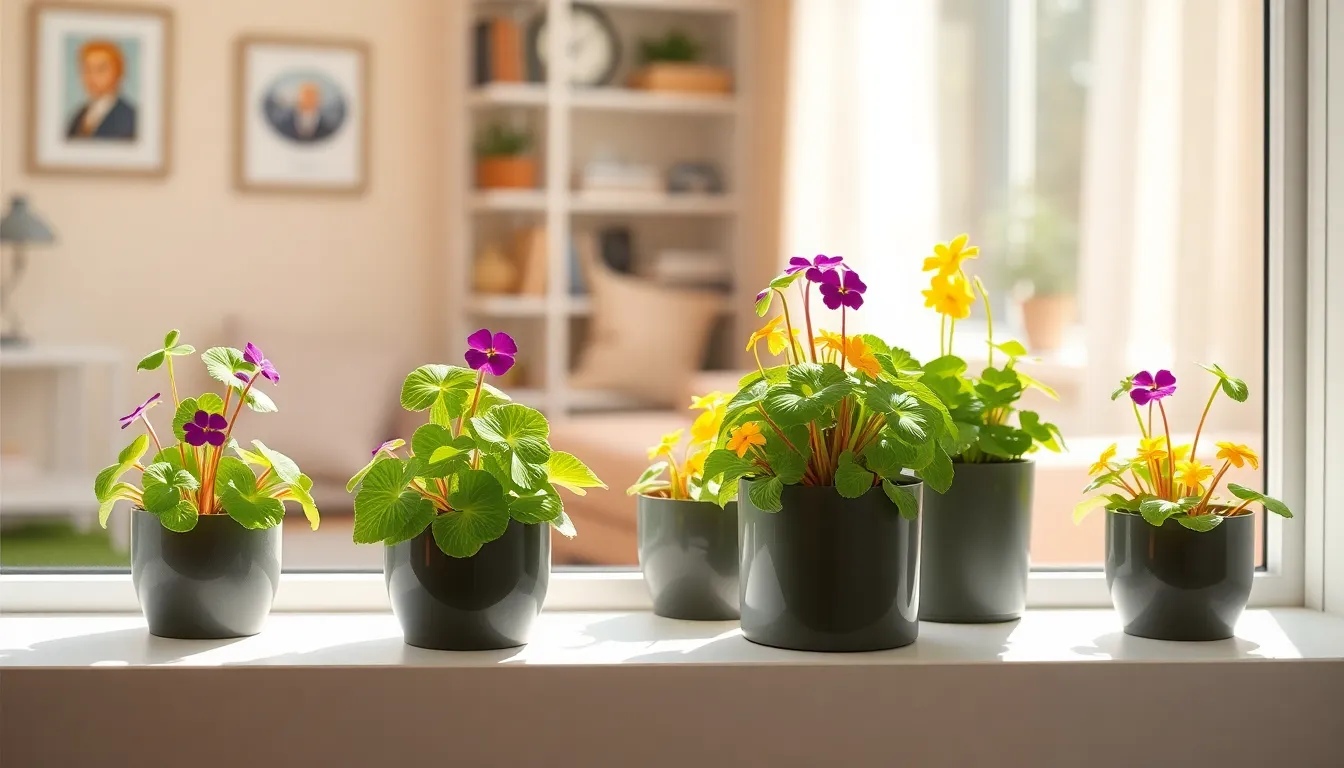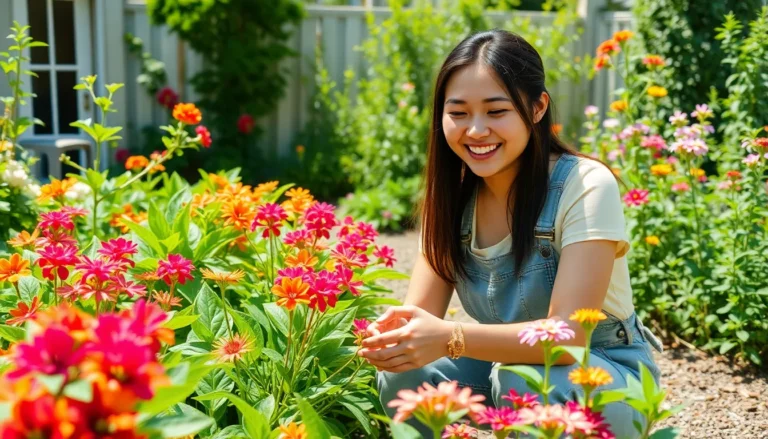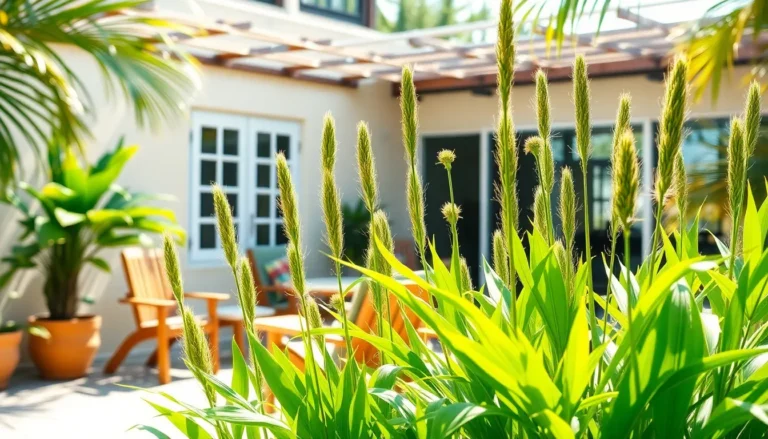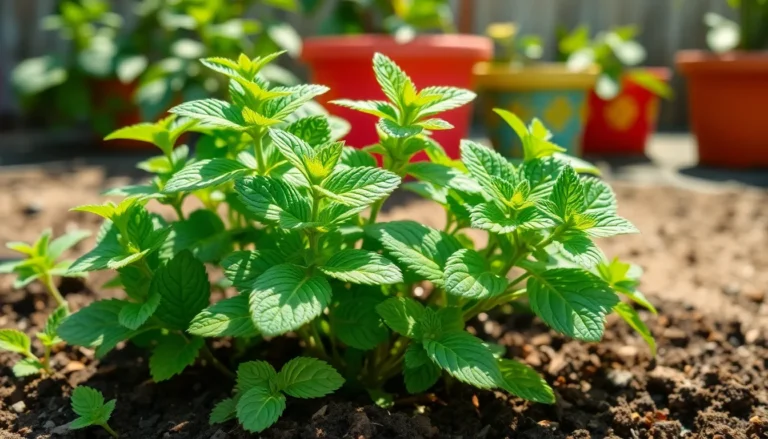If you’re looking to add a splash of charm to your indoor garden, the oxalis plant is your go-to green buddy. With its delightful clover-like leaves and vibrant blooms, it’s like the life of the party in the plant world. But before you invite this little gem into your home, you’ll want to know how to keep it happy and thriving. After all, nobody wants a moody plant sulking in the corner!
Understanding Oxalis Plants
Oxalis plants offer unique beauty and charm, making them popular choices for indoor gardening. Knowledge of their care requirements ensures they thrive in a home environment.
Types of Oxalis Plants
Several species of oxalis exist, each with distinct features. Oxalis triangularis, or purple shamrock, showcases striking purple leaves and delicate white or pink flowers. Oxalis deppei, known as the Mexican oxalis, boasts bright green foliage and vibrant yellow blooms. Another variety, Oxalis pes-caprae, or yellow shamrock, captivates with bright yellow flowers and clover-like leaves. These types vary in their ideal growing conditions, providing options suitable for different environments.
Characteristics of Oxalis
Oxalis plants typically possess clover-like leaves, creating a lush appearance. Leaf shapes may vary, ranging from triangular to rounded, with colors including green, purple, or variegated patterns. Flowering occurs in various hues, including white, yellow, and pink. Growth habits differ, with some oxalis spreading quickly while others remain compact. Understanding these characteristics helps in selecting the right type for specific spaces and aesthetic preferences.
Essential Care Tips for Oxalis
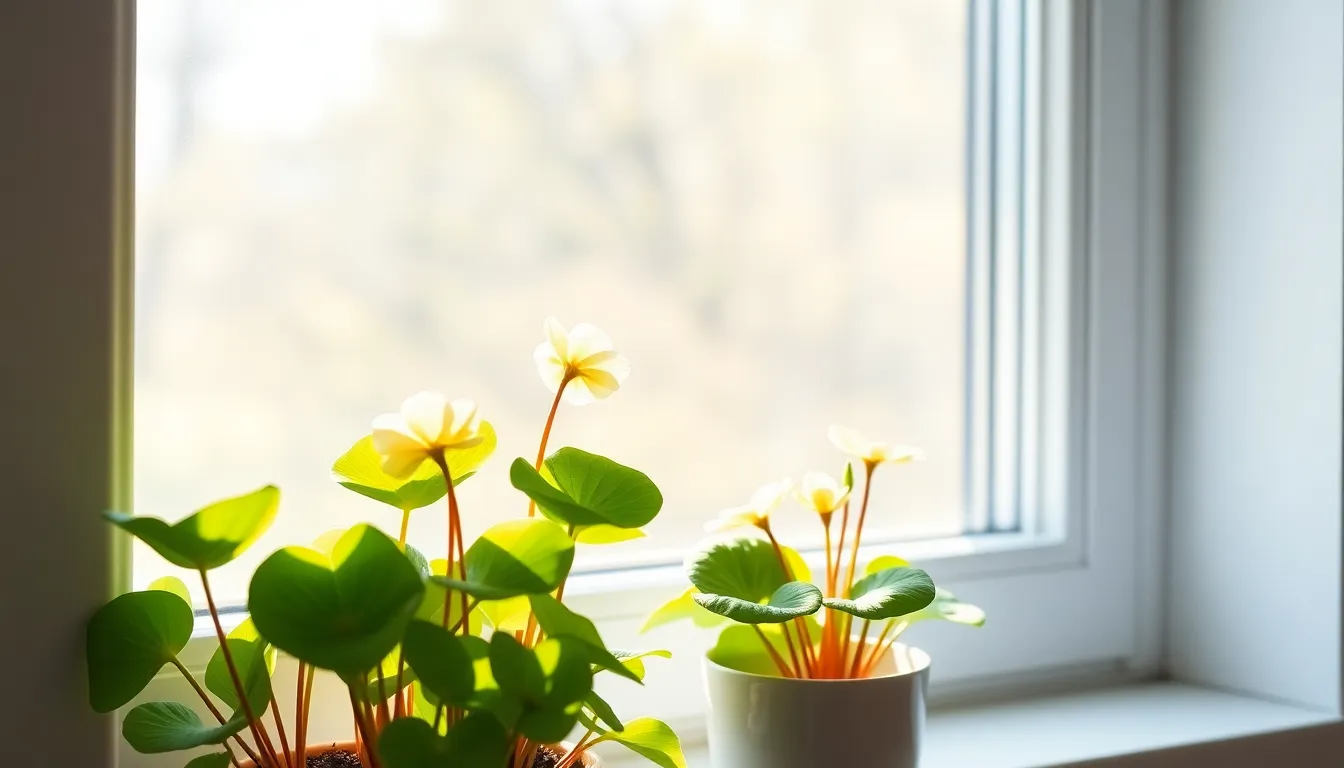
Oxalis plants thrive with proper care, making attention to their specific needs crucial for maintaining their charm. Focusing on light and water requirements ensures they flourish beautifully.
Light Requirements
Oxalis plants prefer bright, indirect sunlight. Positioning them near east or west-facing windows offers ideal conditions. Avoid direct sun exposure, as it can scorch the leaves. When light levels are too low, growth may slow down, and flowers could drop. If a plant isn’t receiving enough light, yellowing leaves may occur. Rotate the pot regularly to promote even growth and prevent tilting towards the light source. Each species may have slight variations in light needs, so consider specific types for optimal results.
Watering Guidelines
Watering oxalis requires a balanced approach. Allow the top inch of soil to dry out before re-watering to prevent over-saturation. Using room temperature water encourages healthy root development. Frequency may vary by season; during active growth phases, water more often, while reducing in dormancy. Signs of overwatering include mushy roots and yellow leaves. Conversely, underwatering can lead to droopy foliage. Implementing a consistent watering schedule ensures the plant remains hydrated without risking root rot.
Soil and Fertilization
Oxalis plants thrive in well-draining soil enriched with organic matter. The appropriate soil mix promotes healthy growth and proper drainage to prevent root rot.
Choosing the Right Soil
A fast-draining potting mix works best for oxalis. Potting soil combined with perlite ensures adequate aeration. Alternatively, a cactus blend can offer excellent drainage properties. Regularly check soil moisture to maintain optimal conditions. Adjusting the mix with compost provides vital nutrients while enhancing soil structure.
Fertilizer Recommendations
Fertilization enhances oxalis growth during the growing season. A balanced liquid fertilizer every four to six weeks supports leaf and flower development. Diluting the fertilizer to half strength prevents nutrient burn. Choosing a formula high in phosphorus promotes vibrant blooms. During the dormant phase, reducing or ceasing fertilization helps guide the plant into its natural rest cycle.
Common Pests and Diseases
Understanding common pests and diseases that affect oxalis plants is crucial for maintaining their health and beauty. Identifying issues early prevents significant damage.
Identifying Pests
Aphids often appear as small green or black insects clustering on stems and undersides of leaves. Mealybugs present as white, cottony masses on stems and leaves, indicating an infestation. Thrips may cause silvery streaks on leaves and appear as tiny, slender insects. Spider mites create fine webbing and yellowing on leaves, signaling their presence. Fungal diseases like powdery mildew manifest as white powdery spots on leaves, commonly arising in overly humid conditions. Recognizing these signs allows for timely action.
Treatment Options
Insecticidal soap offers an effective method for treating aphids and mealybugs, allowing for safe application on affected leaves. Spraying neem oil effectively controls pests while promoting healthy growth. Regularly wiping leaves with a damp cloth removes pests and prevents infestations. If fungal diseases develop, applying a fungicide tailored for indoor plants combats mildew and helps restore health. Quarantine infected plants to prevent spreading diseases. Regular inspection of oxalis plants fosters early detection, ensuring optimal care.
Propagating Oxalis Plants
Propagating oxalis plants can expand your collection easily and efficiently. Two primary methods include dividing bulbs and using leaf cuttings.
Methods of Propagation
Dividing bulbs remains a straightforward technique. It’s recommended to gently remove the plant from its container and separate the bulbs carefully, ensuring each segment has roots. Leaf cuttings also work effectively. For this method, selecting healthy leaves and cutting them into sections can lead to new growth. Each section should possess a vein for successful rooting. Placing either method in a well-draining medium aids in establishing roots.
Best Time to Propagate
Timing contributes significantly to successful propagation. Early spring serves as the ideal period, aligning with oxalis’s growth cycle. During this time, plants begin actively growing, increasing the chances of successful root establishment. Observing the parent plant for vigorous growth can also signal readiness for propagation. Propagation should occur before flowering to promote energy directed toward new growth rather than supporting blooms.
Conclusion
Caring for oxalis plants can be a rewarding experience for any indoor gardener. By understanding their specific needs regarding light, water, soil, and fertilization, it’s possible to create an environment where these charming plants can flourish. Regular maintenance and vigilance against pests and diseases will further enhance their beauty.
For those looking to expand their collection, propagation offers an exciting opportunity to grow new plants from existing ones. With the right care and attention, oxalis plants can bring vibrant colors and unique charm to any space, making them a delightful addition to indoor gardens.

